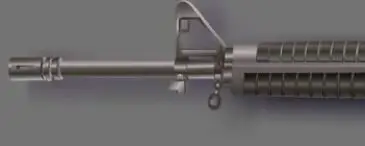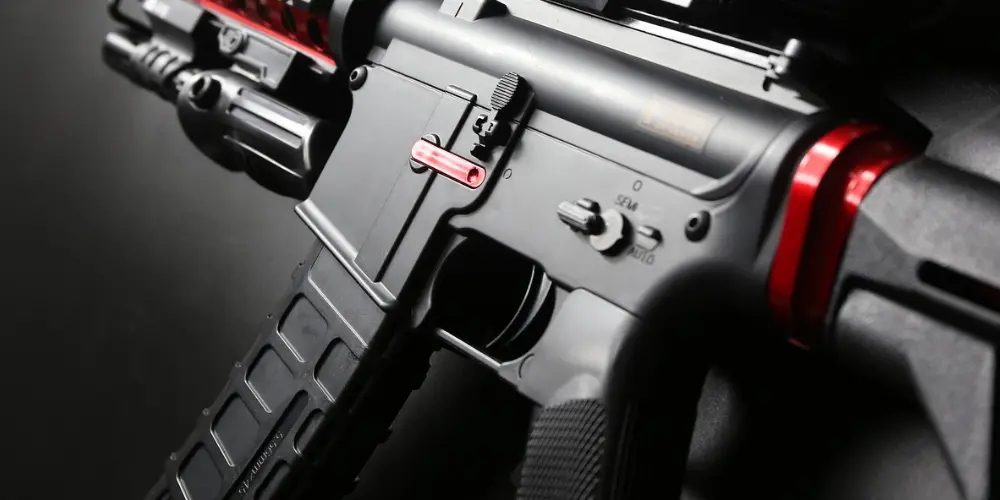Single Stage vs Dual Stage Trigger: Which One Should You Choose?
When it comes to choosing between a single-stage and dual-stage trigger, gun enthusiasts often find themselves in a dilemma. Both types of triggers have their own set of advantages and disadvantages, and the choice ultimately depends on the shooter’s preferences and intended use of the firearm.
Single-stage triggers are simpler in design and have a lighter pull weight, making them ideal for quick follow-up shots. They have only one breaking point, which means that as soon as the shooter reaches this point, the ammunition is dispatched. On the other hand, dual-stage triggers have two breaking points, allowing the shooter to take up the slack before the trigger breaks and the round is fired. This can improve accuracy and precision, especially in long-range shooting.
Factors such as the intended use of the firearm, personal shooting style, and level of experience can all influence the decision to choose a single-stage or dual-stage trigger. It is important to carefully consider these factors and weigh the pros and cons of each type of trigger before making a decision. Ultimately, the best choice is the one that feels most comfortable and natural to the shooter, and allows them to achieve their desired level of accuracy and performance.
Understanding Trigger Stages
When it comes to choosing a trigger for a firearm, one of the most important factors to consider is the trigger stage. A trigger stage refers to the amount of travel and pressure required to fire the firearm. There are two main types of trigger stages: single stage and dual stage.
A single stage trigger, as the name suggests, has only one stage of travel. When the shooter applies pressure to the trigger, the firearm will fire once the trigger reaches a certain weight or break point. Single stage triggers are commonly found on rifles and are ideal for shooters who prefer a simple and consistent trigger pull.
On the other hand, a dual stage trigger has two stages of travel. The first stage requires a certain amount of pressure to be applied before the trigger moves. Once the shooter reaches this point, they will feel a slight “wall” or resistance before the second stage is engaged. The second stage requires a bit more pressure to be applied before the firearm will fire. Dual stage triggers are commonly used in precision shooting and long-range shooting where a more controlled trigger pull is desired.
It is important to note that the choice between a single stage and dual stage trigger ultimately comes down to personal preference and the intended use of the firearm. Some shooters prefer the simplicity and consistency of a single stage trigger, while others prefer the added control and precision of a dual stage trigger.
When choosing a trigger, it is also important to consider the weight and break point of the trigger. A heavier trigger weight and longer travel can make it more difficult to achieve a precise shot, while a lighter trigger weight and shorter travel can increase the risk of accidental discharge.
Overall, understanding trigger stages is an important aspect of choosing a trigger for a firearm. Shooters should consider their personal preferences and intended use of the firearm when making their decision.
Single Stage Triggers
Single-stage triggers are popular among gun enthusiasts for their simplicity and ease of use. They are designed to fire the moment the trigger is pulled, with no additional pressure needed. This design makes them ideal for quick follow-up shots, which is why they are often used in competitive shooting and hunting.
Single-stage triggers are static and have no take-up or slack. When you press the trigger, there is only the break and the rifle will fire. Most single-stage triggers have lighter pull weights by comparison to their two-stage brethren.
Some examples of single-stage triggers for AR-15 rifles include:
- Geissele Automatics Super Dynamic 3 Gun Trigger
- Timney AR-15 Competition Trigger
- CMC Triggers AR-15 Tactical Single Stage Curved Trigger
- ALG Defense Advanced Combat Trigger (ACT)
- Velocity Triggers AR-15 Curved Trigger
Pros of Single Stage Triggers
One of the main advantages of single-stage triggers is their simplicity. They have fewer moving parts, making them less prone to malfunction. They also have a lighter pull weight, which means there is no slack or pull back when firing. This feature makes them ideal for quick and accurate shooting.
Single-stage triggers are also more straightforward to use, making them ideal for beginners. They require less training and practice than dual-stage triggers, which can be more complicated to operate.
Cons of Single Stage Triggers
While single-stage triggers have many advantages, they also have some drawbacks. One of the main disadvantages is that they can be less precise than dual-stage triggers. They tend to have more creep and take-up, which can make them less accurate. This feature can be particularly problematic for long-range shooting.
Another disadvantage of single-stage triggers is that they can be less safe than dual-stage triggers. They have a lighter pull weight, which means they can be accidentally fired if the shooter is not careful. This feature can be particularly dangerous for inexperienced shooters.
In summary, single-stage triggers are ideal for quick and accurate shooting. They are simple to use and require less training than dual-stage triggers. However, they can be less precise and less safe than dual-stage triggers. Shooters should consider their skill level and shooting needs before choosing between the two types of triggers.
Dual Stage Triggers
Dual-stage triggers are designed to allow shooters to take up most of the pull weight of the trigger in the first stage. This results in the second stage requiring next to no pressure to fire. Long range shooting and scenarios that allow for time to line up and take a shot, such as deer hunting on a stand, benefit the most from dual-stage triggers.
Some examples of dual-stage triggers for AR-15 rifles include:
- Triggertech AR-15 TT-AR-15 Triggers Adjustable – Curved or Straight
- Triggertech AR-15 TT-AR-15 Trigger 3.5LBS – Curved or Straight
- Stern Defense LLC AR-15 H2S Hybrid Triggers Drop-In 2-Stage
- Timney AR-15 Targa 2-Stage Trigger Short
- Timney AR-15 Targa 2-Stage Triggers Long
Pros of Dual Stage Triggers
Dual-stage triggers allow shooters to take up most of the pull weight of the trigger in the first stage. This results in the second stage requiring next to no pressure to fire. Long range shooting and scenarios that allow for time to line up and take a shot, such as deer hunting on a stand, benefit the most from dual-stage triggers.
- Dual-stage triggers can help improve accuracy by reducing the amount of movement in the rifle when the trigger is pulled.
- Dual-stage triggers can help reduce the likelihood of accidental discharges.
- Dual-stage triggers can help reduce shooter fatigue.
- Dual-stage triggers allow shooters to take up most of the pull weight of the trigger in the first stage. This results in the second stage requiring next to no pressure to fire.
- Dual-stage triggers are ideal for long range shooting and scenarios that allow for time to line up and take a shot, such as deer hunting on a stand.
Cons of Dual Stage Triggers
Dual-stage triggers can be more complex compared to a single-stage trigger, which can make it more difficult to use and maintain. The two-stage trigger design requires more parts, which can make it more prone to failure or malfunction. Dual-stage triggers can have a heavy pull and a lot of creep or take-up. Longer pull and slower reset time can mean trouble in a situation where a fraction of a second means life and death. Some consider dual-stage triggers to be a poor choice for battle rifles.
- Dual-stage triggers can be more complex compared to a single-stage trigger, which can make it more difficult to use and maintain. The two-stage trigger design requires more parts, which can make it more prone to failure or malfunction 1.
- Dual-stage triggers can have a heavy pull (mil-spec is 5.5 to 8.5 lbs) and a lot of creep or take-up (the length the trigger travels before the hammer releases). Longer pull and slower reset time can mean trouble in a situation where a fraction of a second means life and death 2.
- Some consider dual-stage triggers to be a poor choice for battle rifles 2.
- Dual-stage triggers can be too long in pull and too slow to reset in a situation where fractions of seconds can separate life and death 12.
Factors to Consider When Choosing a Trigger
- Single-stage triggers have one consistent weight of pull from start of trigger press until it “breaks” or fires the gun.
- Two-stage triggers have two different weights of pull, the take-up stage and the second stage or “wall”.
- Single-stage triggers are ideal for rapid-fire and competitions where speed is a priority.
- Two-stage triggers are aimed at precision shooting.
- Two-Stage triggers are often to be considered safer since they reduce accidental discharges due to heavier pull weight.
- Single-stage triggers are cheaper and easier to operate but don’t give you as much precision as two-stage triggers.
Conclusion
In conclusion, when choosing between a single or double stage trigger, there are several factors to consider. Single-stage triggers have one consistent weight of pull from start of trigger press until it “breaks” or fires the gun. Two-stage triggers have two different weights of pull, the take-up stage and the second stage or “wall”. Single-stage triggers are ideal for rapid-fire and competitions where speed is a priority, while two-stage triggers are aimed at precision shooting and serve well in military operations. Single-stage triggers are cheaper and easier to operate but don’t give you as much precision as two-stage triggers.
If you would like to learn more about firearms and other related topics, please check out other articles on our site.


